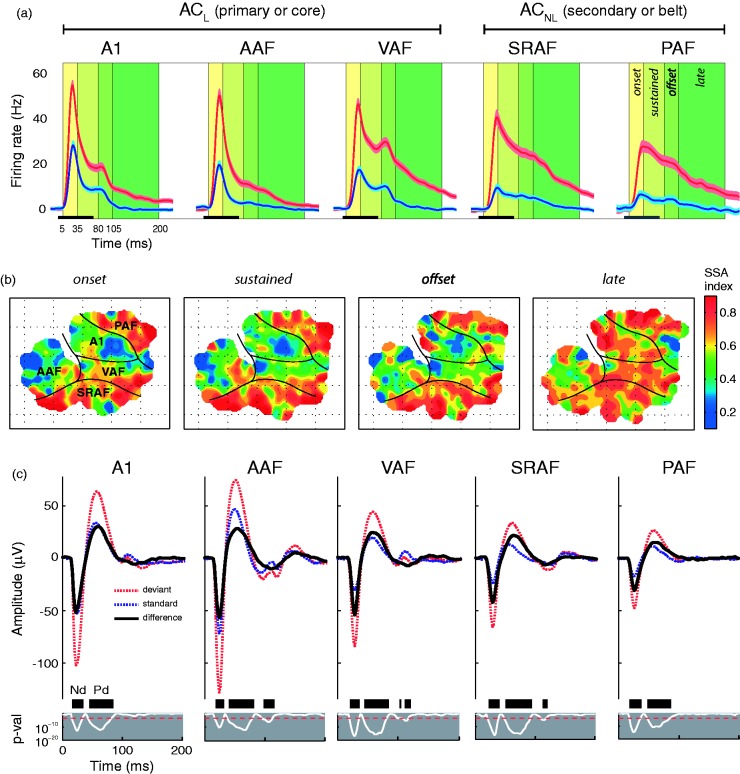Figure 7.
Variation of SSA index throughout time and cortical fields. (a) Grand-average multiunit responses (baseline-corrected firing rate, mean ± SEM) to standard (blue) and deviant (red) tones within each field and throughout four characteristic time windows. Many recordings showed significant late-component responses, beyond 100 ms after stimulus onset (check Figure 2(b) for a single-unit example). (b) Topographic distribution of SSA for the four different time windows. Note that only the late component of SSA index is high throughout the entire auditory cortex, suggesting intracortical hierarchical processing of deviance detection. (c) Grand-average LFP traces in response to deviant and standard tones, and the resulting difference wave (black), for each AC field. Two components of the difference wave were identified: the fast negative deflection (Nd) and the slower positive deflection (Pd). And additional small but significant deflection of the LFP was identified at longer latencies (>100 ms) in anteroventral fields (AAF, VAF, and SRAF). The thin white line below represents the p value of the difference wave, with a thick black bar marking the time intervals containing significant differences.
AAF = anterior auditory field; AC = auditory cortex; LFP = local field potential; PAF = posterior auditory field; SRAF = suprarhinal auditory field; SSA = stimulus-specific adaptation; VAF = ventral auditory field. Adapted from Nieto-Diego and Malmierca (2016).

